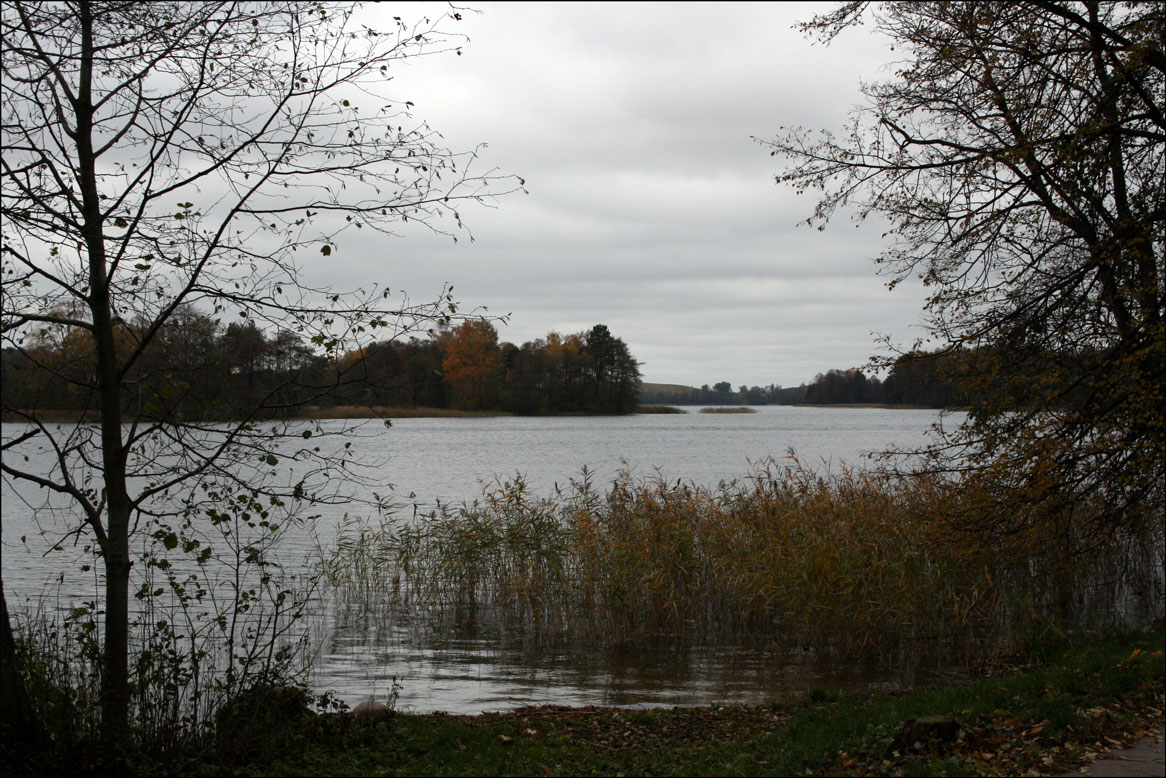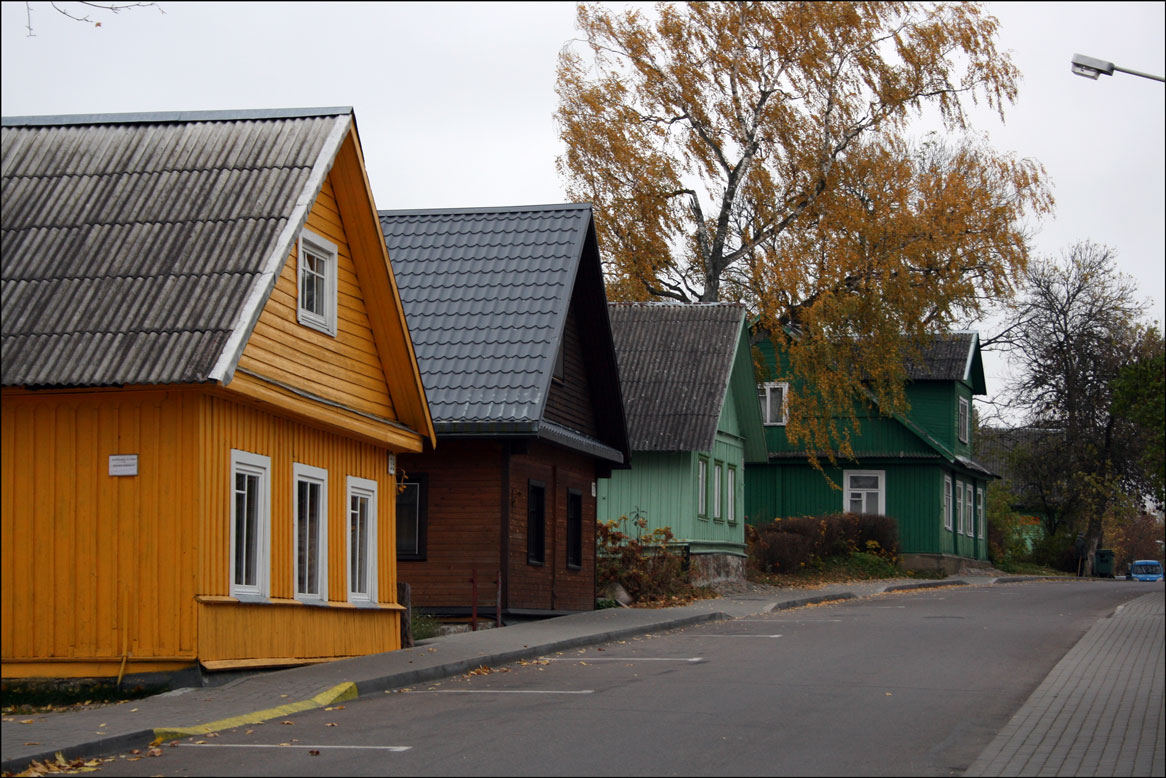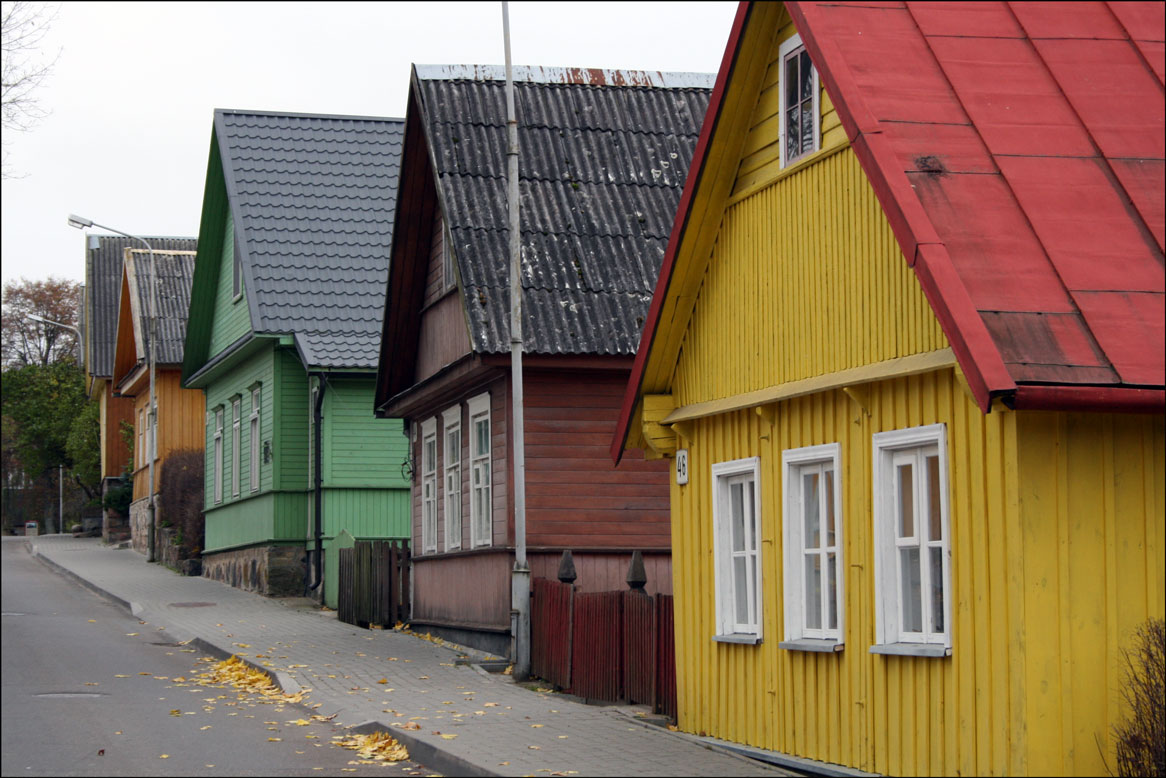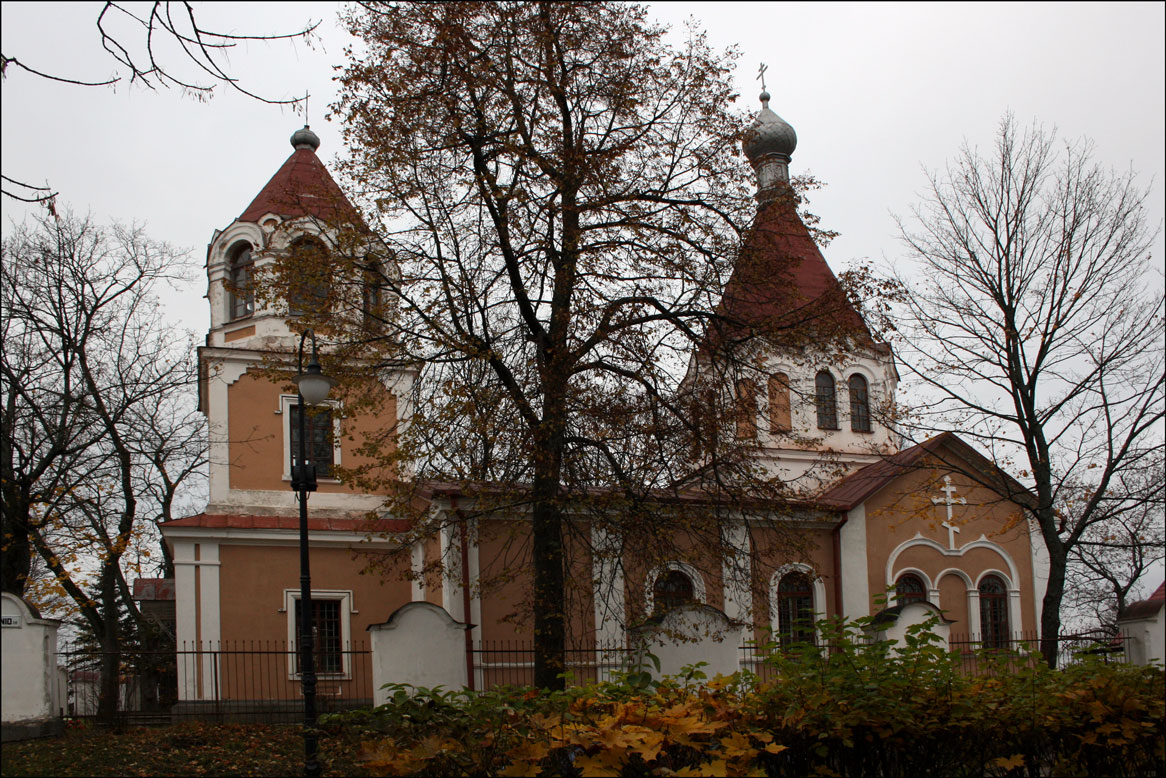In Trakai, a group of people called the Karaites have had a significant influence on local architecture and culture. The Karaites are an offshoot of Judaism, although they are not Semitic. Karaites are of Turkish origin and were living in the Crimean peninsula when Grand Duke Vytautas brought them to Lithuania (some as prisoners of war).
View of Lake GalvÄ— in Trakai, Lithuania
SOURCE: View of Lake GalvÄ— in Trakai, Lithuania. Photographed by Stephen J. Danko on 23 October 2007.
In Lithuania, the Karaites were allowed to practice their own religion. They served as guards in the fortresses and as personal bodyguards to Vytautas. The Karaites culture has permeated daily life in Trakai and many restaurants serve kibinai, a delicious pastry filled with mutton or mushrooms or other delicacies.
Karaites Houses in Trakai, Lithuania
SOURCE: Karaites Houses in Trakai, Lithuania. Photographed by Stephen J. Danko on 23 October 2007.
Karaites still live in Trakai. Their houses are distinctive with three windows facing the street. In fact, the houses are typically constructed sideways to the street, with the length of the houses extending away from the street and the entrance on the side. Many of the houses are built on stone foundations.
More Karaites Houses in Trakai, Lithuania
SOURCE: More Karaites Houses in Trakai, Lithuania. Photographed by Stephen J. Danko on 23 October 2007.
Just down the street from the houses of the Karaites stands the Russian Orthodox Church of the Nativity of the Most Blessed Virgin Mary. The church was consecrated on 22 September 1863 in commemoration of the defeat of the Polish-Lithuanian Uprising against the Russian government.
Russian Orthodox Church of the Nativity of the Most Blessed Virgin Mary in Trakai, Lithuania
SOURCE: Russian Orthodox Church of the Nativity of the Most Blessed Virgin Mary in Trakai, Lithuania. Photographed by Stephen J. Danko on 23 October 2007.
Copyright © 2007 by Stephen J. Danko








Steve, I’ve very much enjoyed both the photographs and the journal of your trip to Lithuania. It’s very interesting to be learning about another culture, and especially about a location that is not a big tourist spot! Geographically, the area you visited reminds me of Western Washington (the “wet” side of my state); seeing the Russian Orthodox church actually reminded me of Alaska, where that influence is still felt.
I hope you have more to share with us!
Miriam,
If someone had told me 10 years ago that I would visit Lithuania one day, I would have thought they were crazy. Lithuania does attact its share of tourists, but generally not in October and generally not in the rural parts of the Dzūkija region where my ancestors lived.
I learned more about Lithuania in one week than I had learned in all my previous life.
The different housing has fascinated me, from the barns, to your family’s home, to these Karaites homes. They sure stand out if you know about the three windows. They are colorful. Do you have any idea how old these homes might be?
Also regarding these curious houses (Karaites)… did you get to visit inside these homes, and do they differ much from the houses in the United States, i.e. amenities?
Janice
Stephen,
Your photographs are absolutely superb! Having been to Trakai myself just a year ago, you brought it back to me much better than my own haphazard photography. But I want to send you one of my photographs somehow (as an attachment) with a personal story. I’m sure you will recognize it. The history and migration of the Karaites was so fascinating, even if my tour group got only a very condensed version. Was the city of Kaunas on your travel agenda?
Brenda (NIGS)
Cheryl, sorry, I don’t know how old these houses are, but I suspect they are less than 100 years old – maybe even less than 50 years old, considering how much destruction occurred during World War II.
Janice, I didn’t get to go inside any of these houses. I suspect these particular houses have most of the amenities we have in the United States. I did, however, go into one house near Alytus that had a wood burning stove in the kitchen and still had toilet facilities in an outhouse!
Professor Brenda, I’m glad these photos brought back memories. You have me very curious about the photo and personal story you mentioned. No, I didn’t get to Kaunas. I had the choice of Trakai or Kaunas and I chose Trakai.
Steve
Steve, I understand how you must have felt going in the one house with the wood burning stove and outhouse. The first time I went to Costa Rica to meet my husband’s family, he had warned me about all I would see and have to deal with. He actually scared me from going. His family is poor and he warned me of dirt floors, no hot water, an outhouse, bugs, etc. The worst part was, we were going to be staying in this small home with the rest of the family! He did a great job preparing me as when we got there it wasn’t as bad as I expected. They didn’t have dirt floors anymore, bugs weren’t a problem, but, the facilities were outside and no hot water. They washed clothes by hand. Whenever we go, we have more fun buying the family things they really need, they think we are rich! lol Last time we bought them a dining room table and hutch set, and then I realized they needed dishes and utensils so they didn’t have to wash a plate for the next one to be able to eat. We sure had fun surprising them that trip! We are planning a trip back in April and I will be curious to see how far they have come along now, and what we can surprise them with again! As a last note, I loved the country, the family the people there. I cam e home in tears, thinking America had a lot to learn!